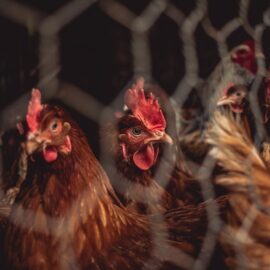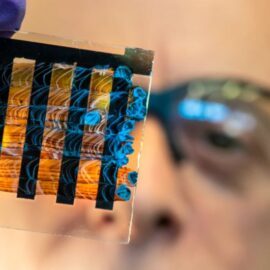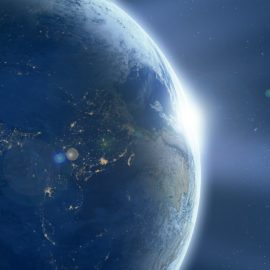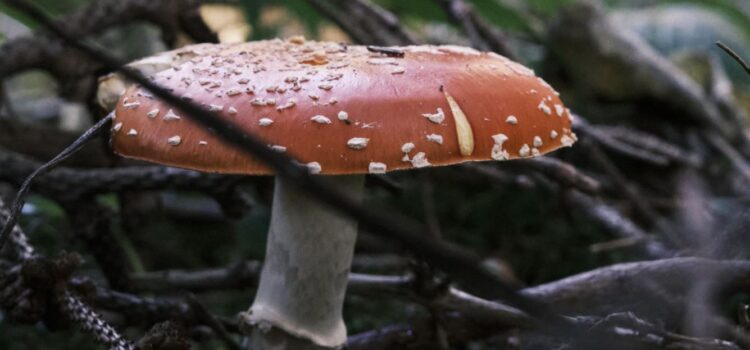
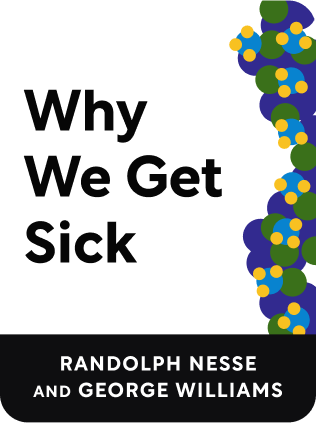
This article is an excerpt from the Shortform book guide to "Why We Get Sick" by Randolph Nesse and George Williams. Shortform has the world's best summaries and analyses of books you should be reading.
Like this article? Sign up for a free trial here .
How can you tell if a plant or animal is likely to be toxic? How have our bodies evolved to avoid toxins?
The reason we’ve evolved a preference for variety in food is that too much of one type of food can lead to a buildup of toxins in the body. It may also be the reason why pregnant women tend to crave bland food in early pregnancy.
Continue reading to learn how evolution protects against toxin exposure.
Environmental Toxins
Just like animals, plants undergo natural selection for reproductive fitness. In the wild, plants develop defenses from eating, like hard pods and toxic exposure.
Plants have developed a wide range of toxins, including tannins (in wine), alkaloids, cyanide, glycosides (from foxgloves), diazepam (from potatoes), and solanidine (nightshades, potatoes). While the amounts of toxins in typical plants aren’t enough to damage humans, consider how much they might deter a hungry mouse weighing 1/3000th of a human’s weight.
Using Darwinian Thinking to Avoid Exposure When Foraging
If you’re ever foraging for plants in the forest, you obviously would like to know which plants are toxic and not. Darwinian thinking is helpful here: consider the natural competitive equilibrium that would result in the phenotype observed.
- Plants that are readily accessible, with little seeming defense around them (such as tubers, mushrooms, and leaves) must have selected other defense mechanisms, like potent toxins. In contrast, those that have clear defenses (like hard shells around nuts, or thorns on berry bushes) are less likely to be toxic.
- Plants create fruits for animals to eat and disperse the seeds in their excrement. Therefore, seeds are more likely to be toxic if destroyed or chewed—a disincentive for hungry animals to chew seeds. Further, immature fruits without ready seeds are wasted if eaten, so they’re also more likely to be toxic.
- The same applies to easily accessible animal prey, such as caterpillars and insects. Eat the camouflaged frog, not the bright yellow one sitting sleepily on a branch.
- Toxins are metabolically taxing for plants to produce, so rapidly growing plants and the first leaves of spring are less likely to be toxic.
- Some plants might adopt the extreme strategy of fast growth with no toxins (such as bamboo).
- A local area devoid of herbivorous predators would have plants less likely to be toxic.
Toxins and People
In Stone Age times, eating too much of one thing increased the risk of consuming an unhealthy amount of toxins. Eat a diet consisting entirely of wild potatoes, and you might actually be poisoned.
Therefore, we’ve evolved a preference for variety in food. We prefer to eat a buffet of options, rather than stick to a single diet daily. This is yet another example of how a trait was helpful in the Stone Age, but a bad adaptation for today’s food-plenty world.
The Modern Age’s Toxins
Today’s environment likely exposes us to fewer toxins than ever in history. However, the body builds tolerance to toxins upon exposure. Therefore, today we might be the most susceptible to toxins, and the most incapable of handling large toxic insults, than ever before.
At the same time, the modern world has introduced a variety of new toxins to which we haven’t evolved an instinctual avoidance of. This includes heavy metals, antifreeze, cleaning products, and radioactivity.
Cooking Reduces Toxins
Cooking neutralizes many toxins in wild food. This contributes to cooking cultural traditions that are passed down through generations.
- The Olmec people boiled corn with alkali, which frees the vitamin niacin and balances amino acid composition.
- Porno Indians in California mixed acorn meal with red clay, which bound tannin. Tannin disrupts digestion of nutrients.
People Vary in Susceptibility to Toxin Exposure
People vary in susceptibility to pathogens depending on growth stage and gender.
Actively metabolizing tissues are more vulnerable to toxins than dormant ones; dividing cells are more vulnerable than quiescent ones; undifferentiated cells are more vulnerable than differentiated ones.
This might explain nausea in early pregnancy. In pregnancy, morning sickness peaks in first trimester, then subsides over time. Fetal vulnerability to toxins is also highest in the first trimester.
- During early fetal development, it makes sense for the mother to be picky with food. She might prefer bland foods and avoid strong spices and odors like lamb.
- Suggestive evidence: women who experience no pregnancy nausea are more likely to miscarry and have birth defects.
- It’s common for women to take anti-nausea medications in pregnancy. But consider the possible side effects—suppression of morning sickness may encourage more harmful dietary choices, thus causing birth defects.
This thinking might also explain why children tend to hate bitter vegetables and prefer sweets. Toxins cause more damage in the young, developing bodies of children, and so we might have evolved to avoid toxins early in life. Remember this when you next see children refuse to eat brussels sprouts!

———End of Preview———
Like what you just read? Read the rest of the world's best book summary and analysis of Randolph Nesse and George Williams's "Why We Get Sick" at Shortform .
Here's what you'll find in our full Why We Get Sick summary :
- Why evolution hasn't rid humans of all diseases
- How reproductive fitness is more important than overall survival
- How you evolved to dislike the sound of a baby crying

